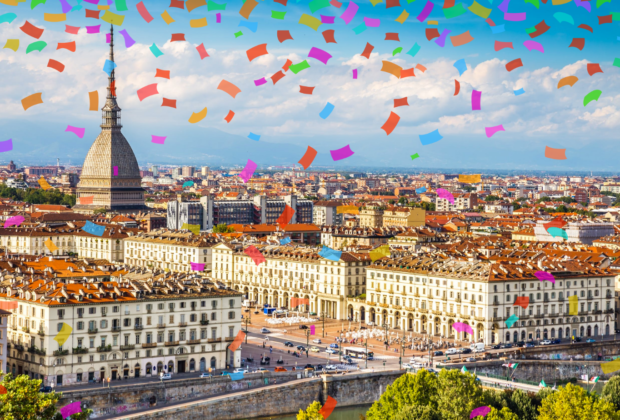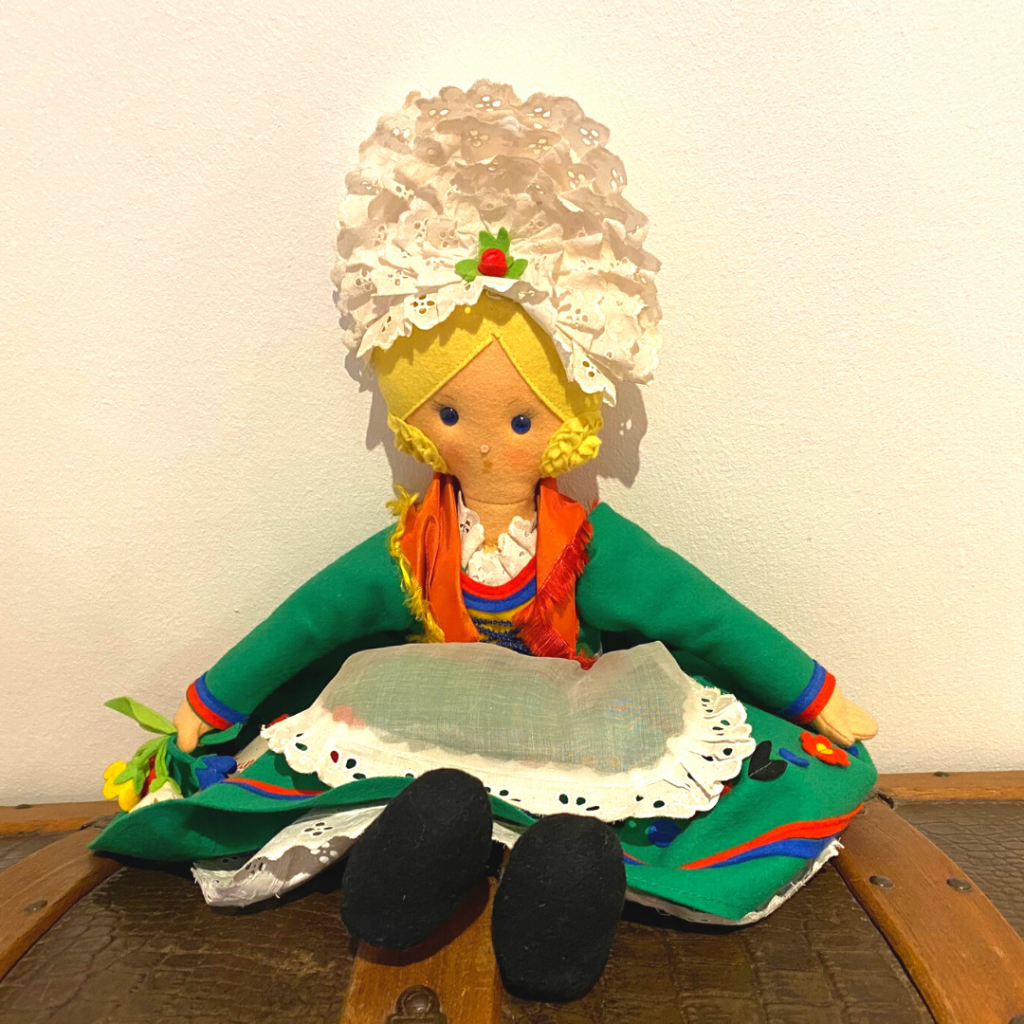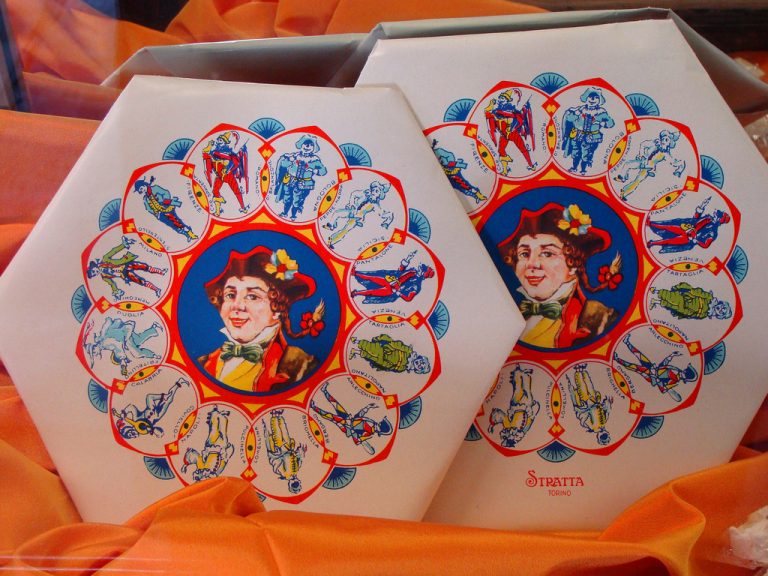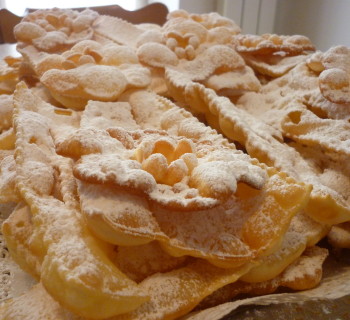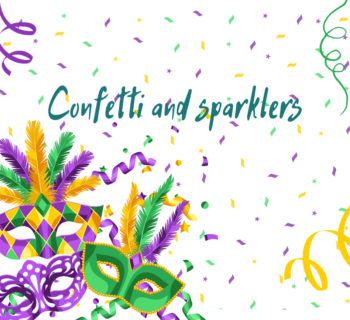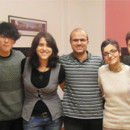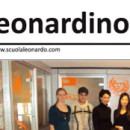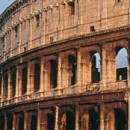Gianduja: the mask of the Turin carnival
Gianduja (in Piedmontese Giandoja, IPA [ʤan dʊja]) is a popular Turin mask of Asti origins of the "commedia dell'arte". Its name derives from the expression "Gioann dla doja" (literally John of the jug).
According to tradition, Gianduja has a ruddy face and hair gathered in an upturned ponytail, he is dressed in a brown jacket edged with red, a yellow waistcoat, green and knee-length trousers, red stockings and flat shoes with brass buckle. He has the sly, the mug always full of wine and a benevolent smile.
Gianduja and Giacometta: made for each other
Cheerful and enjoyable, he embodies the Piedmontese stereotype of the "gentleman": courageous, sensible, inclined to good and faithful to his inseparable companion Giacometta, who supports him in dances, but above all in charitable works.
In the week preceding the beginning of Lent, Gianduja visits hospices, shelters, children's hospitals, distributing the typical round and flat candies, wrapped in a hexagonal foil, imprinted with his profile and the tricorn of the nineteenth-century Piedmontese armies to which it is due to the unity of the country.
Gianduja candies: the most authentic flavor of the Turin carnival
Gianduja candies are a Turin specialty and represent, together with "bugie", the traditional Carnival dessert in Turin. Unknown to the rest of Piedmont, finding them is difficult.
The first certain traces of their production are linked to the De Coster candy factory which already in 1880 marketed them in their typical hexagonal packaging, but soon they were sold by all the historic Turin confectioners, such as Stratta, Baratti, Venchi, Talmone and more recently from the Icaf chocolate shop and from Caffè Torino.
These particular candies are made of sugar worked in copper pans with fruit essences. The colored syrup obtained from the processing is then poured onto cold marble tables, thanks to this process they owe their shape of a large transparent drop. Once cooled, the candies are wrapped in a characteristic hexagonal wrapping with the image of Gianduja in the center and the other "commedia dell'arte" masks around.
Initially, the Gianduja candies were quite large and they were broken to be shared among friends. Over the years the candy has become more and more like a lollipop and today there are two versions: 5 and 8 cm in diameter. Today the dolcetto is round in shape and is no longer amber in color and has fruity ingredients such as orange, lemon, strawberry, apple, pineapple and blueberry.
Tasting them means rediscovering the most authentic flavor of the Turin carnival!
Read more about the city of Turin:
- Visit Piedmont following the Big Bench
- The three capitals of Italy
- Discovering Turin: the magic city
- Turin and the coffee
- The Eurovision song contest 2022 arrives in Turin!
- Turin: the Italian capital of chocolate
- Let's visit Turin with our precious guide tour Vera
Scuola Leonardo da Vinci Turin
The welcoming friendly atmosphere of our school will make you feel at home and you can relax with your classmates in the small gardens of the adjacent pedestrian area.
Latest posts by Scuola Leonardo da Vinci Turin (see all)
- The 4+1 unmissable suggestions for Christmas shopping in Turin - December 17, 2025
- What is the difference between the Carabinieri and the Police? - November 26, 2025
- 5+1 scenic spots in Turin with the Scuola Leonardo - October 15, 2025


